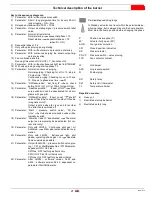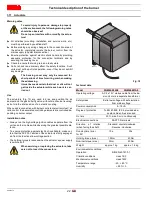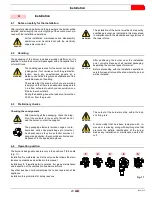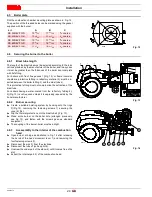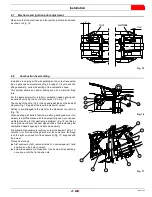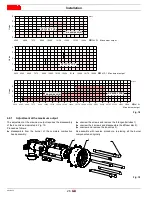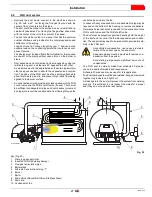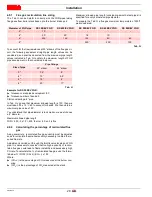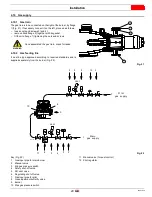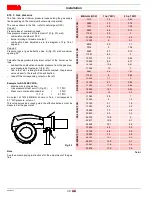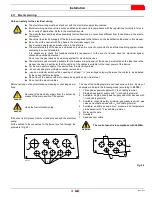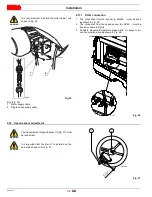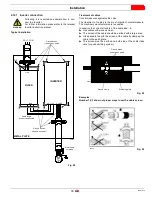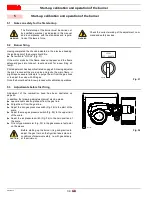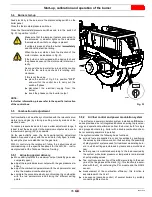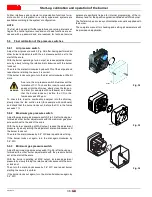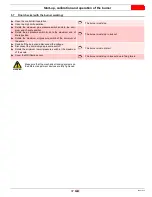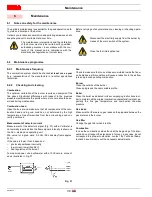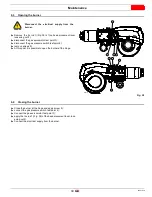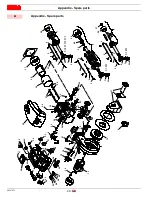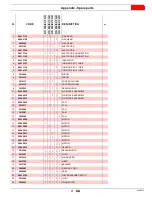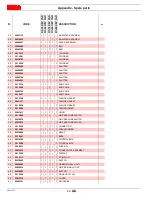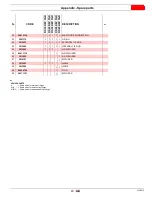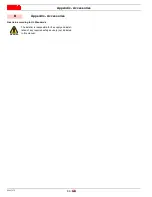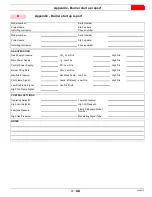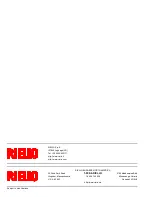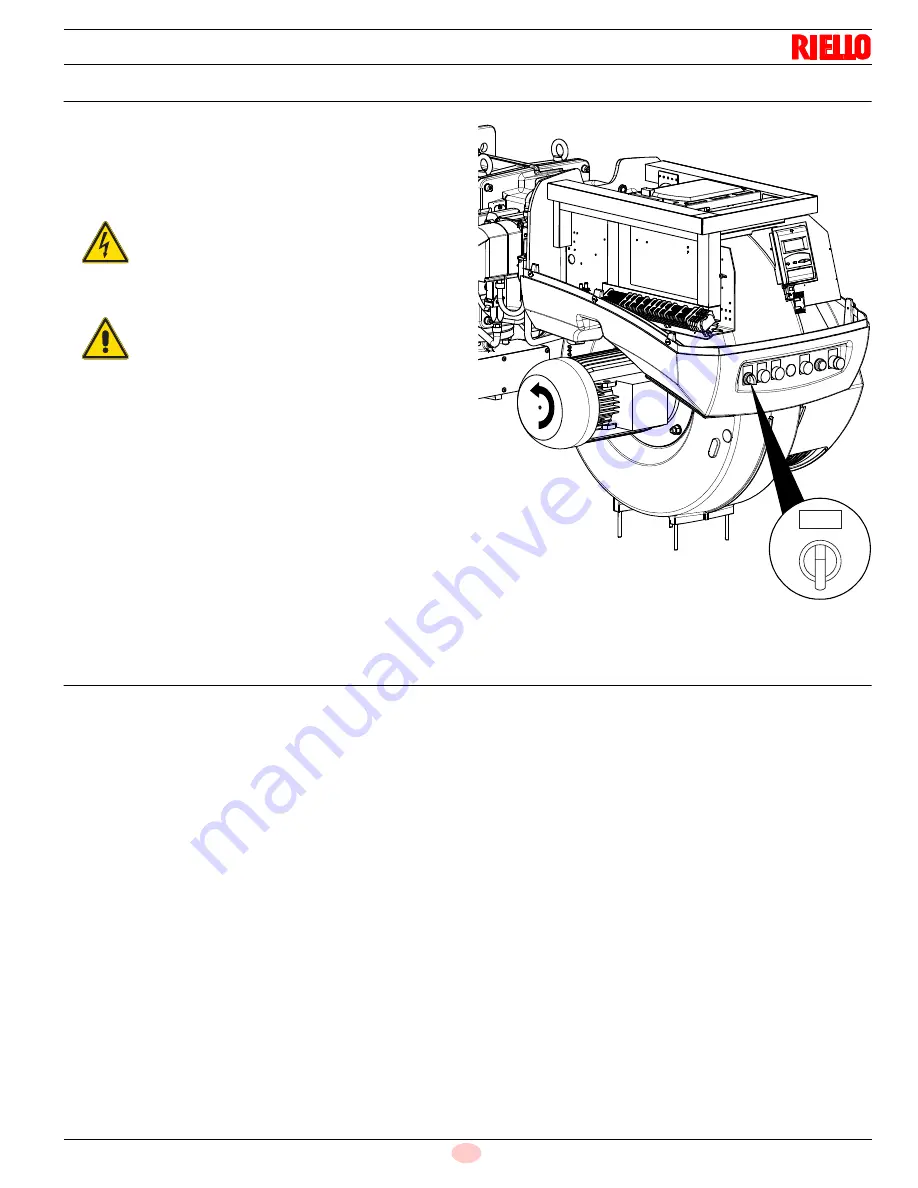
Start-up, calibration and operation of the burner
35
20037075
GB
5.4
Burner start-up
Feed electricity to the burner via the disconnecting switch on the
boiler panel.
Close the thermostats/pressure switches.
Close the thermostats/pressure switches and turn the switch of
Fig. 33 to position “LOCAL”.
NOTE:
for further information, please refer to the specific instruction
of the control box.
5.5
Combustion air adjustment
Fuel/combustion air must be synchronized with the relevant servo-
motors (air and gas) by storing a setting curve by means of the
electronic cam.
To reduce pressure loss and to have a wider adjustment range, it
is best to set the servomotor to the maximum output used, as near
to maximum opening (90°) as possible.
On the gas butterfly valve, the fuel’s partial setting adjustment
based on required output, with the servomotor fully open, is made
by using the pressure stabilizer on the gas train.
With O
2
control via the relative kit, follow the instructions about
commissioning in the specific handbook for the LMV52.... instru-
ment provided at the Technical Service Training.
5.5.1
Adjusting gas/air delivery
➤
Move slowly towards the maximum output (butterfly gas valve
completely open);
➤
adjust the required maximum output with the gas pressure sta-
bilizer;
➤
adjust the combustion parameters with the air servomotor and
store the maximum combustion point;
➤
complete the procedure slowly, synchronizing the combustion
with the two servomotors and storing the different setting
points.
5.5.2
Air/fuel control and power modulation system
The air/fuel and power modulation system installed on RS burner
series provides, a set of integrated functions ensuring top level en-
ergy and operational performance from the burner, both for single
and grouped burners (e.g. boiler with a double combustion cham-
ber or several generators in parallel).
The system includes the following basic functions:
➤
air and fuels are supplied in correct quantities by positioning
the valves by direct servo-control, thus avoiding the possibility
of play typical of systems used for traditional modulating burn-
ers, in which settings are obtained by levers and a mechanical
cam;
➤
burner power is modulated according to the load required by
the system, while boiler pressure or temperature is maintained
at set operating values;
➤
fine, continuous correction of the airflow according to the anal-
ysis of the flue gases at the stack (O
2
); this function is associ-
ated with the O
2
kit containing the PLL module and the QGO2
sensor;
➤
measurement of the combustion efficiency; this function is
associated with the O
2
kit;
➤
a sequence (cascade control) of several boilers by suitably
connecting different units.
DANGER
Make sure that the lamps or testers connected to
the solenoids, or indicator lights on the solenoids
themselves, show that no voltage is present.
If voltage is present, stop the burner immediately
and check the electrical wiring.
WARNING
When the burner starts, check the direction of the
motor rotation, as indicated in Fig. 33.
If the burner is not equipped with a device to check
the phases sequence, the motor could rotate incor-
rectly.
As soon as the burner starts up, look at the cooling
fan of the fan motor and check it is rotating anti-
clockwise.
If this is not the case:
➤
place the switch of Fig. 33 in position “OFF”
and wait for the control box to carry out the
switch-off phase;
➤
disconnect the electrical supply from the
burner;
➤
invert the phases on the inverter output.
Fig. 33
D11387
S8362
OFF
REMOTE
LOCAL
Summary of Contents for RS 300/EV FGR
Page 2: ......

